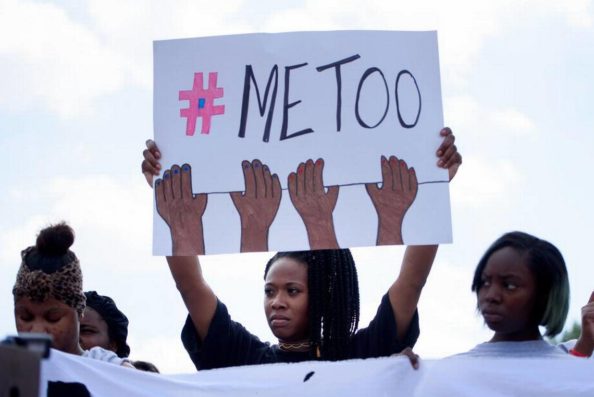by Ellen Bravo
When my sister and I were kids, my father told us a riddle about three salesmen sharing a hotel suite. At check-in, the manager quoted them a price of $30; each guy paid ten bucks (okay, it’s an old story). Soon the manager realized his mistake – the room was actually $25. He gave the bell-hop a 5-dollar bill to give back to the guests. On the elevator, the bell-hop pondered how to divide the fiver among the three men; he decided to give each a dollar and keep two for himself.
My dad drilled us on the math: Each man paid $10 and got $1 back, so each paid $9. Three times nine is $27. The bell-hop has $2. Where’s the other dollar?
My sister and I scoured that imaginary hotel but we never found the missing dollar. Only later did we realize our mistake: you had to subtract, not add, the bell-hop’s $2 to get the amount the room actually cost. A very important lesson: if you don’t frame the problem correctly, you’ll never get the solution.
We recently saw just this kind of snookering in the Brett Kavanaugh fiasco. Hearings for a Supreme Court justice should have one aim: to determine whether the individual is qualified to serve for life on the highest court in the land. Yet an administration bent on ramming through the nomination triumphed by reframing the question to a narrow, technical one. We need to understand how they pulled off this con, how they are using it to try to derail growing opposition – and what to do about
Early in the hearing, numerous senators questioned whether Kavanaugh lied when he denied knowledge of stolen documents during another nomination years earlier. The administration dismissed as partisan politics requests for hundreds of pages of pertinent information. The majority leadership was ready to rush to a vote and claim their prize. And then the nation learned about Dr. Christine Blasey Ford.
The administration’s response was cautious at first. Kellyanne Conway set the tone: those who claim sexual assault deserve a chance to be heard. Soon Conway raised flags about why no other women were coming forward as they had with Harvey Weinstein and others. The absence of other voices, she implied, cast doubt on the credibility of Blasey Ford.
Others did step forward – women who described sexual misconduct by Kavanaugh, men and women who attested to his drinking to excess, including to the point of blacking out. Dr. Blasey Ford delivered a powerful testimony, widely deemed “credible” and “compelling.” Among the hundreds of survivors who made their way to the Capitol to demand an FBI investigation, two women confronted Sen. Jeff Flake, a Republican who expressed anguish after hearing Blasey Ford’s story. At the last moment, he pushed for the investigation.
Media Dropped the Ball
By that point, millions of Americans had begun to have doubts about Brett Kavanaugh’s suitability for the Supreme Court. They’d observed a man lie under oath about the extent of his drinking and the meaning of various terms he used in his high school yearbook and display a jarringly inappropriate temperament for a judge.
We held our breath to see what the FBI would uncover. Almost immediately we heard about restrictions on the scope of the inquiry. Despite claims to the contrary, that’s exactly what happened. No conversation with Dr. Christine Blasey Ford or Kavanaugh. Not one agent visited the other women who had spoken up or the classmates with eye-witness accounts of routine drinking to excess along with sexist and aggressive behavior.

Just like that, the issue shifted from whether this individual had the integrity and judicial temperament for a life-long appointment on the Supreme Court, to one narrow question: could the FBI corroborate a particular party on a particular night? They could not. Sen. Susan Collins and several other key colleagues jumped on the bandwagon: no corroboration, no deal-breaker. Kavanaugh was in. Few in the media called this out.
We know why Kavanaugh’s appointment was so critical to this president. Yes, there were other candidates, but no one so ready to accept the argument that a sitting president can’t be indicted.
But the flip in narrative accomplished more than securing the vote. It drove the #MeToo voices off the screen and the front page. Trump resorted to mockery of Dr. Blasey Ford not just for laughs – the thing she’d named as the most haunting part of her ordeal – but to change the narrative from “endangered women” to “endangered men.” Not all men, of course – the loud dog whistle here is that white men are endangered, by women, but also by immigrants, those who would erase their white majority. Unruly, dangerous mobs of them. With the appearance of the Central American caravan, one danger morphed into the other. Kavanaugh’s accusers became pawns of the Democrats. Central American families fleeing for their lives become criminals coming to vote for Democrats.
Refuting the Con Job
Clearly Trump and his allies are speaking to his base. But he has important messages for two other groups as well. One targets white suburban women with explicit talk about the danger to their sons, and subliminal messages about what it might mean if white people lose their dominance due to immigration. He aims another subliminal warning at women who are newly engaged in politics: “You can’t fight me. You can’t win. Go home.” Trump crafted his tale of a red surge above all to dishearten his opponents.
Those of us who care about justice and equity must refute this con job in every way we know how – by refusing to buy it and demanding the media expose it as well; by working non-stop to get out the vote; by standing strong against racism and xenophobia; by helping those who’ve been trampled on stand together to say we will never be silenced. We will make ourselves heard on November 6 and every day thereafter.